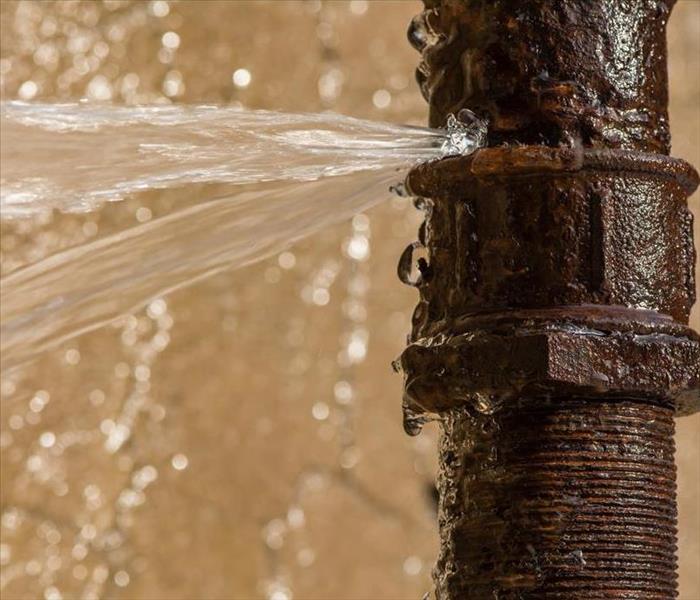What To Do When a Pipe Breaks in Your Home
4/9/2022 (Permalink)
Bursting pipes can prove chaotic, expensive and time-consuming, filling a home with excess water and leading to significant overhauls. Those steel or copper tubes break for many reasons, including severe changes in pressure and temperature. In addition, corrosion and external objects may also cause unexpected and unpleasant busts.
Within seconds, homeowners in West Valley City, UT may face a fast-paced breach where water sprays throughout the room. How do you get it to stop? What action should you take? These bursts demand swift attention and thorough cleanup. Be ready for the unpredictable.
What can you Do to Reduce Water Damage?
The following are measures homeowners can take to reduce impact and begin essential home repairs.
1. Shut Down the Bursting Pipes
Above all, owners must focus on cutting off the water supply, thereby limiting the amount of moisture that enters the home. Although helpful to humans and plants, this water proves hazardous to structural materials. The dampness quickly saturates into porous materials. The wetness leads to rot, mildew and mold when allowed to linger.
Therefore, priority number one remains cutting off the flow. Stop, think and locate the closest shut-off valve. If the one in the home doesn't work, go outside and close the main outlet. Do whatever it takes to stop moisture from entering the premises.
2. Fix the Break
Contact professional water restoration services in West Valley City, UT to evaluate the situation. These experts should assist in locating the source of trouble. They should immediately fix broken pipe elements. With the original cause under control, owners may concentrate on salvaging and cleaning the damaged property.
3. Assess the Location
With the plumbing problem corrected, remediation specialists can examine the rooms for secondary damage, such as fluid buildup and microbial exposure. Using moisture reading meters, the team determines how much of the home suffered saturation. They may also take specimens from the walls, air and ceiling (anything impacted from the break), sending these collections out for testing.
The results allow experts to determine if pathogens inhabit the space. The professionals use the information to create a detailed plan to sanitize and restore the house.
4. Agree To Quick Tear Outs
Water damage, especially within a dark and humid space, activates spore reproduction. Therefore, the broken pipe leaves owners with more to consider than a plumbing bill and dampness. Owners must consider the possibility of mold development.
To curtail this predicament, permit restoration employees to remove materials of concern. The team may take out carpeting, drywall and belongings that suffered excess flooding. This decision reduces the number of spores and pathogens to safeguard from spreads.
5. Dry Out
Air out the room, concentrating on extracting as much water as possible from anything left. Remove any standing water, and use dehumidifiers to pull moisture from places you cannot touch or see. These devices use heat to pull fluid from those porous materials. This step helps you lessen the severity of the water conditions.
When you observe water spraying throughout the room or puddling up on the floor, don't panic; instead, kick into action. Immediately shut off the water supply and call for professional help.
Attend to the bursting pipes and initiate remediation efforts. Swift and efficient measures mitigate secondary damage, saving homeowners from further expenses and repairs.






 24/7 Emergency Service
24/7 Emergency Service
